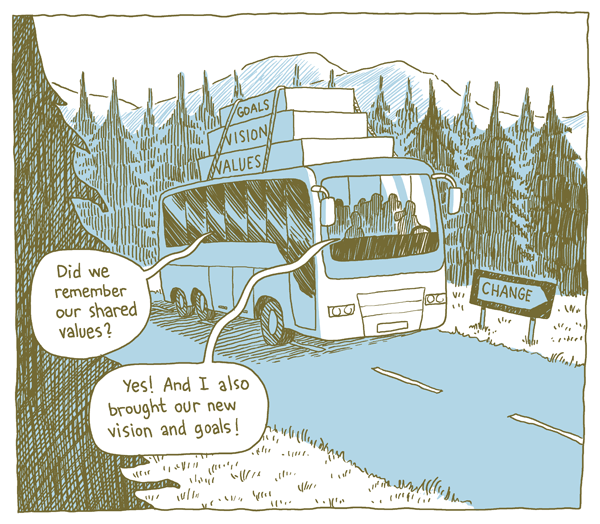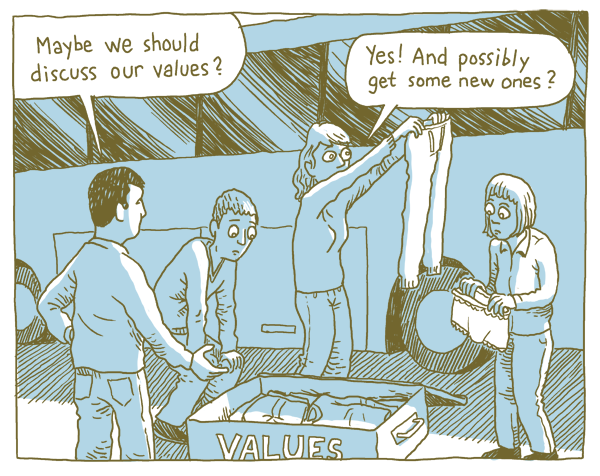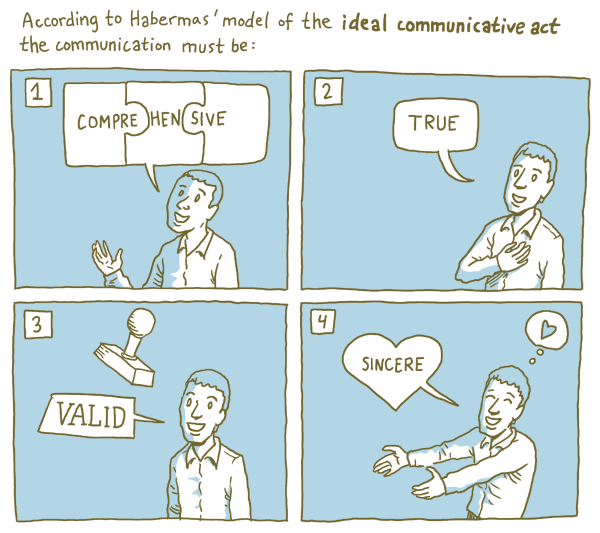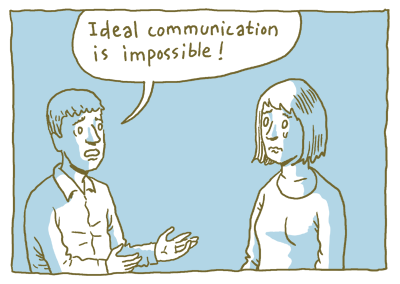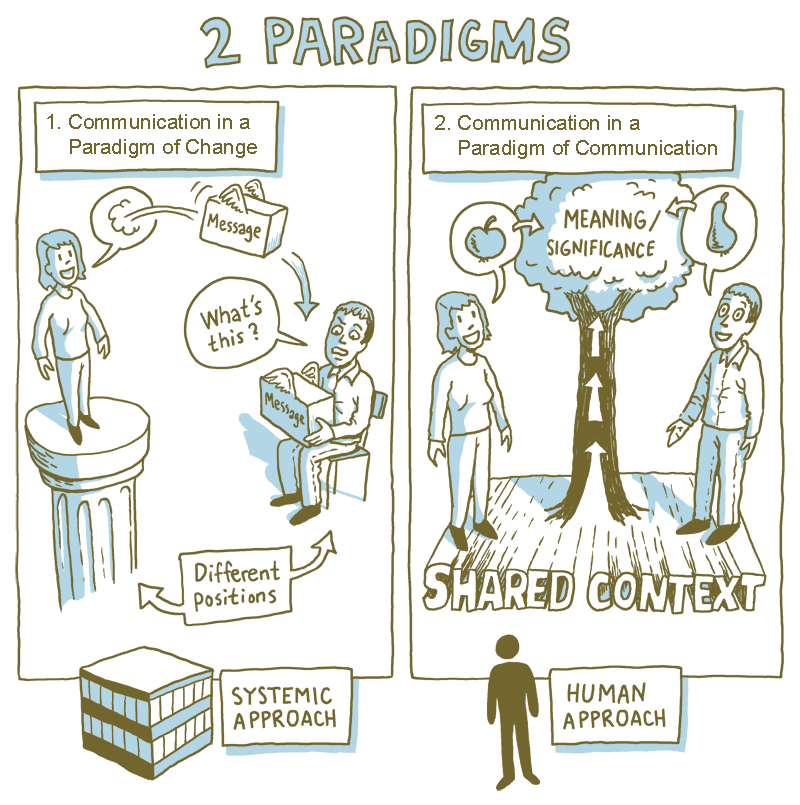Five Flows of Change
This is a co-reading of David Sibbets (founder of The Grove) book Visual Leaders and John P. Cotters article from Harvard Business Review Change Management (March 1995)
To be successful a process of change must follow some basic steps, from attention and engagement towards realizing a vision. I’ve dug into these steps following John P. Cotter and David Sibbet, who represent two very different approaches to change management. Cotter is a professor of Leadership from Harvard Business School and Sibbet is a consultant of graphic facilitation.
Now, why does change have to take place? The answer is simple: Because the world is a place of flux. If companies and organisations remain the same, sticking to their old well-known cultures, they will not be able to preserve themselves. So, in a world of constant change organisations and people also need to change to secure their self-preservation.
The problem is that people are conservative. They are inclined to resist change. To accept change they must acknowledge the need to change in order to keep their jobs. From a management point of view this is the starting point of the first flow of change management.
The Attention Flow
I have listed five essential flows of change management. They are not meant as chronological steps (although som chronology will appear). Rather, they are flows that are significant all the way through the process.
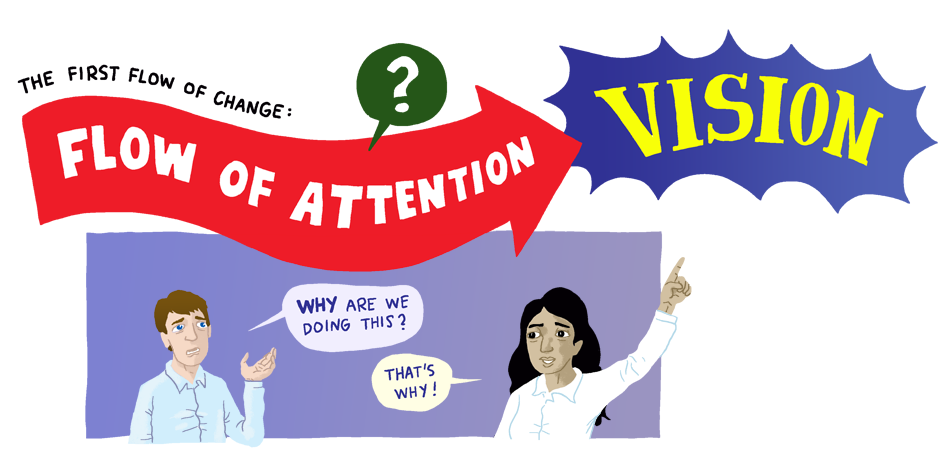
The first flow is the flow of attention, the why. It contains an investigation and analysis of the market and realizes that in the near future there is no place for the organization as it is constituted today. Hence, it must change. Next step is to uncover what this change implies. The organization needs to form a new vision. The new vision must be very clear and should be communicable and understandable within 5 minutes. Several visual tools are useful for this flow. Many of them in the form of a template:
- Drawings of imagined ideas
- SWOT-analysis as a drawing
- Drawings of market threats
- Animated films about market challenges and the need for change
- Drawings of goals and vision
The Engagement Flow
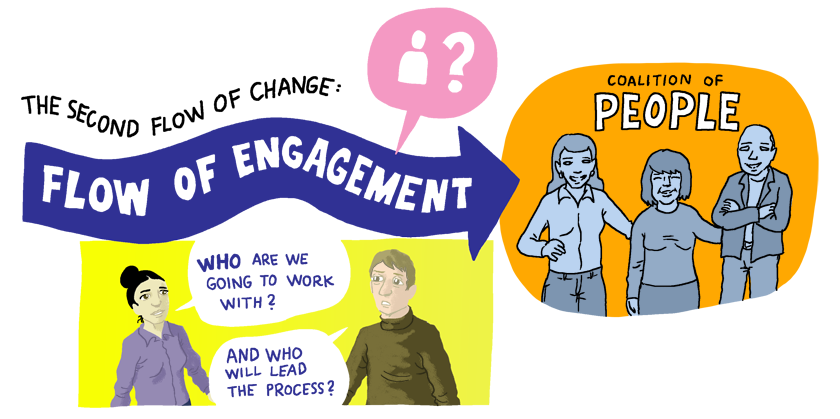
The second flow is the flow of engagement, the who. The organization needs a strong coalition of people from all levels to effectively engage everyone to change their behaviour. This coalition will lead the process of change and inspire everyone to engage in the transformation. Engaging visual tools include:
- Graphic recording at meetings
- Templates for meetings
- Drawing of people, their new roles, and their responsibilities
- Agenda drawings
The Information Flow
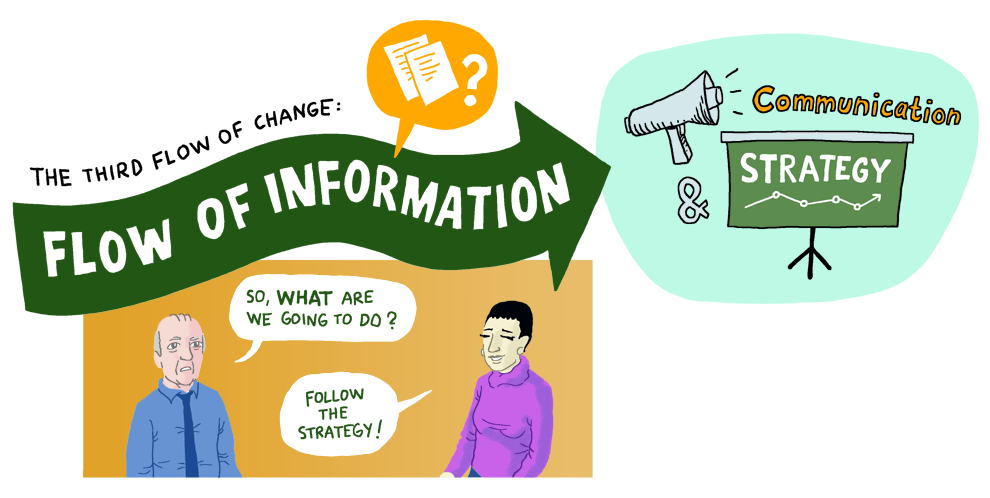
The third flow is the flow of information, the what. The threats and the new vision must be communicated to create the needed attention (the why) of the employees. The information flow also includes details on how to achieve the vision. These details will form the strategy. It is crucial to use plenty of resources communicating the vision and the strategy. Some visual tools for the information flow:
- Animated films explaining the strategy
- Strategy drawing
- Storymap with next steps
The Operation Flow
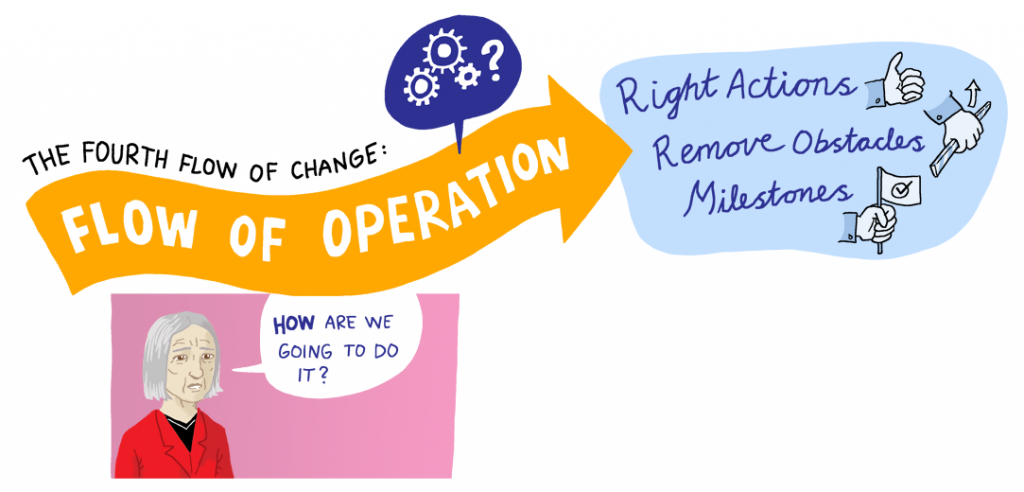
The fourth flow is the flow of operation, the how. This is about making the right actions required to reach the vision. These actions can be difficult as the organization has to remove any obstacle that might obstruct the process. Obstacles can be procedures, systems, and employees that needs to be relocated or even fired. Also crucial to a successful process is motivating and engaging employees by providing milestones. Without milestones people might lose sight of the end goal. The motivation (why are we doing this?) is established with the vision, but with milestones motivation can be maintained during the operation. Here are some visuel tools:
- Drawing of an action plan (with milestones)
- Decision templates
- Animated films about next steps
- Roadmap drawings
- Implementation plan drawings
The Embedding Flow
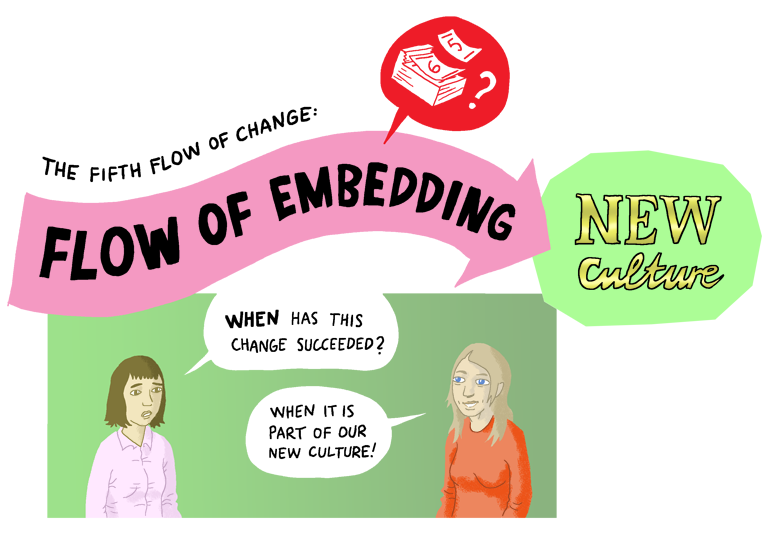
The fifth flow of change is my own suggestion – inspired by Cotter’s emphasis on the establishment of a new culture based on the transformation. It is the flow of embedding, the when. Several actions have been made during the flow of operation. But when is it time to decide the change has succeeded? It can be risky to declare the battle won too early. The transformation process is not over before the changes have been embedded and lead to a new culture in the organization. Not many visual tools are available for this part as it marks the ending of a process. One tool is still useful, though:
- Drawing of a success: How did we get here?
More blog posts about change management? Here!

